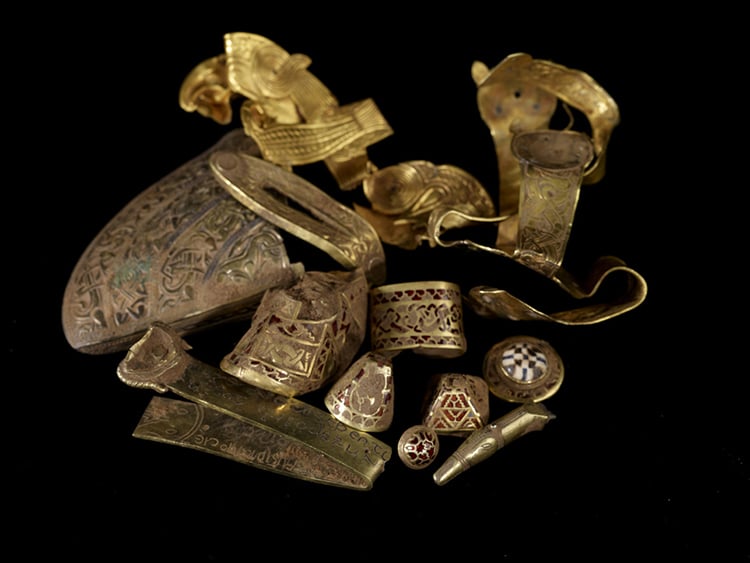
Sponsored Content: Uncover hidden treasures with MAXVALUE
Unearthed in 2009 in Staffordshire, England, the gold and silver artifacts from the Staffordshire Hoard belong to the sixth and seventh centuries (Image via Wikipedia Commons; CC BY 2.0).
Every child’s fantasy involves discovering buried treasure left by pirates or ancient royalty. While most adults may have given up on these fanciful notions, there is still hope for modern-day adventurers. Treasure troves, also known as hoards, continue to be unearthed around the globe. Regular individuals stumble upon collections of ancient coins, golden bangles, and silver platters even today.
Stumbling upon a hidden treasure trove could potentially change the life of a metal-detecting enthusiast or a farmer, turning them into millionaires overnight. Additionally, each discovery adds valuable insight into local history. Keep reading to delve deeper into the world of hoards, treasures, and perhaps rediscover your childhood dream of striking it rich one day.
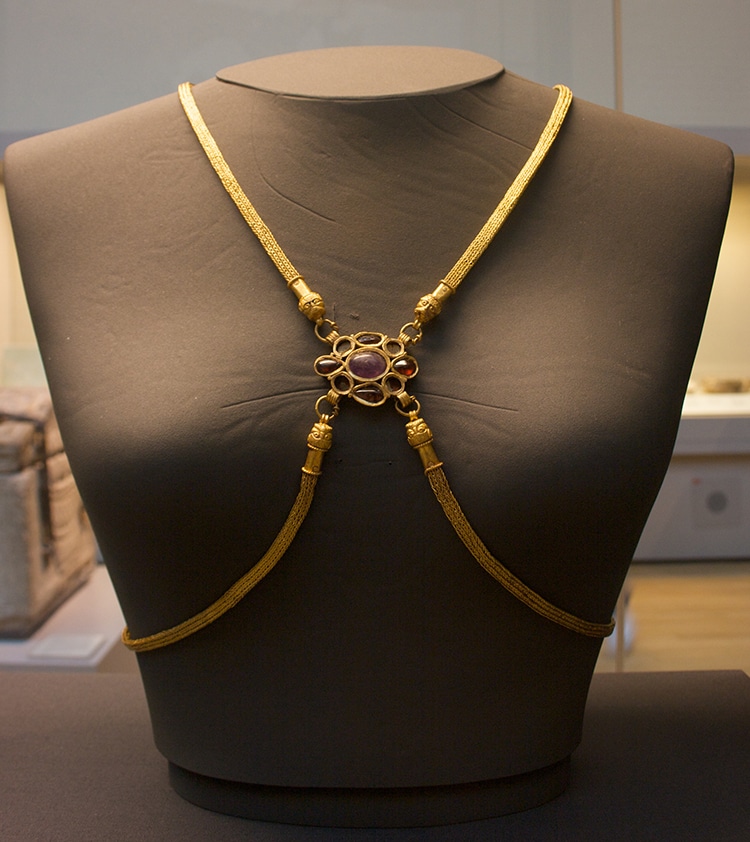
A shiny gold body chain, part of the Hoxne Hoard containing late Roman treasures, was unearthed in 1992 in Suffolk, England. (Image credit: Picture taken by Mike Peel via Wikimedia Commons [CC BY-SA 4.0])
What exactly qualifies as a treasure trove or hoard? Well, according to archaeologists, these are considered as deposits of wealth. They can include precious metals, gemstones, ceremonial objects, and even everyday coins, all made of various metals. The reasons behind burying these treasures underground vary, with factors like political turmoil or conflict in ancient times prompting wealthy individuals to conceal their riches. Typically, these people had intended to retrieve their hidden valuables later on. However, unforeseen events like wars or deaths could disrupt these plans, leading to the hoard remaining hidden until stumbled upon by chance. It’s worth noting that items found in graves or shipwrecks are usually not classified as hoards.

There are treasure troves scattered all over the world, but some of the biggest and most well-known discoveries can be found in Great Britain and Ireland. The term “treasure trove” holds a significant legal meaning when it comes to finding coins and bullion that contain silver or gold. In the UK, the Treasure Act of 1996 regulates the discovery of such treasures. Generally, items that are over 300 years old and consist of at least 10 percent gold or silver are categorized as treasure. Even prehistoric finds can be considered treasure, regardless of their metal content. It is required to report any discoveries to the local coroner within 14 days, as any found treasure belongs to the Crown. Failing to report a discovery can lead to potential imprisonment.

After the coroner discovers potential treasure, an investigation called an inquest is carried out to determine if the items are indeed valuable treasure. The Treasure Valuation Committee, comprised of experts in the field, thoroughly evaluates the artifacts to confirm their status as treasure and determine their worth. If the items meet the legal criteria, the finder (as well as the landowner) must offer them for sale to a museum. These regulations ensure that significant historical treasures are preserved in institutions for study, rather than being lost to private collectors. Overall, this process benefits everyone involved by advancing knowledge and allowing the discoverers to profit from their find.

Renowned Collections of Valuables
The Broighter Gold Hoard
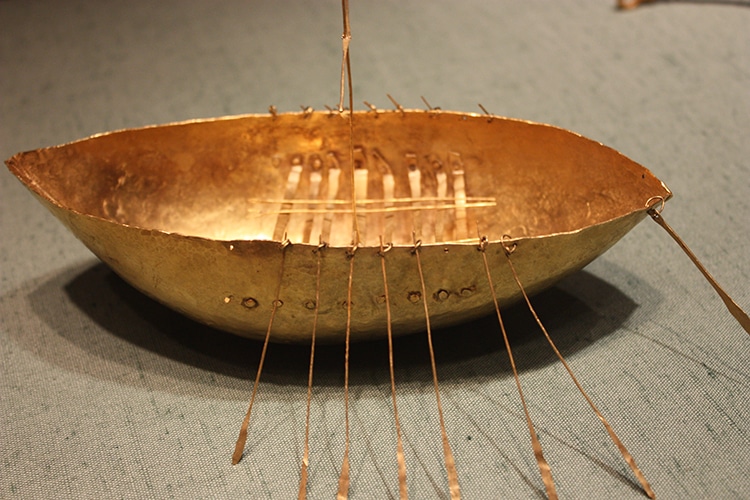
A stunning golden boat is among the treasures discovered in the Broighter Gold hoard, which was unearthed by farmers in Northern Ireland back in 1896. Dating back to the first century BCE, this collection of Iron Age Gold showcases the exquisite metalworking skills of ancient Celtic artisans. In addition to a beautifully crafted torque and other jewelry, there is also a remarkable golden boat with oars. Experts speculate that this hoard may have been a special offering to a Celtic sea deity. This impressive discovery is just one example of the incredible treasures found in ancient sites like The Preslav Treasure.
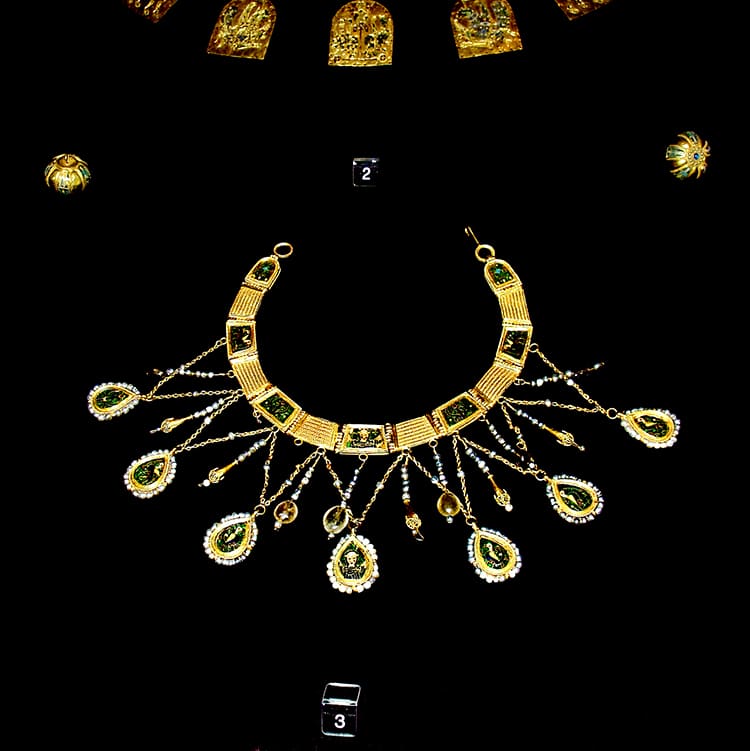
Unearthed in Castana, Bulgaria in 1978, the Preslav Treasure includes a stunning collection of 170 Byzantine treasures crafted from gold, silver, and bronze. Dating back to the 10th century CE, these relics were hidden during a period of political unrest, with some pieces possibly originating from as far back as the 3rd century CE. Among the treasures, the most eye-catching piece is a magnificent golden necklace featuring a pendant depicting the Virgin Mary. It is speculated that this exquisite necklace may have been a cherished wedding gift from a Bulgarian Tsar to a Byzantine princess. Another notable discovery is the Saddle Ridge Hoard.
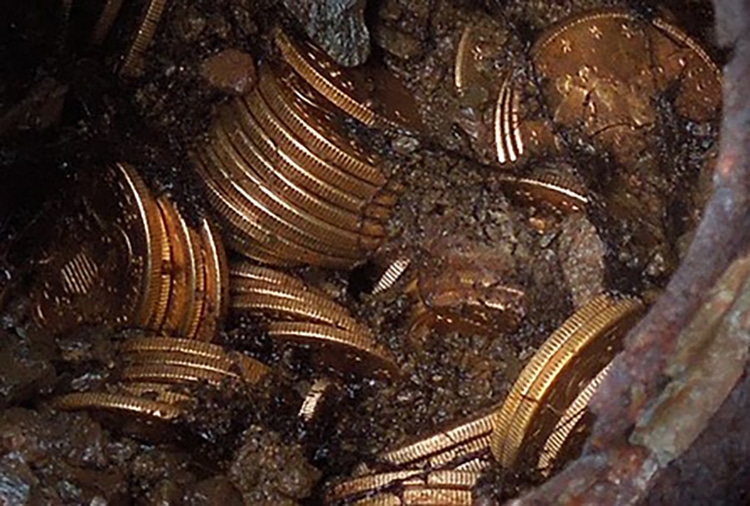
In 2013, the Saddle Ridge Hoard made headlines as the largest stash of buried gold coins ever found in the United States, boasting a total of 1,427 coins hidden in the California Sierra Nevada mountains. With a whopping value of $10 million, these coins, dating back to the late 1800s, were uncovered in eight metal containers by fortunate landowners who stumbled upon them while out walking their four-legged friend. After being carefully examined by numismatic professionals, the coins were evaluated and eventually sold for a pretty penny on Amazon.
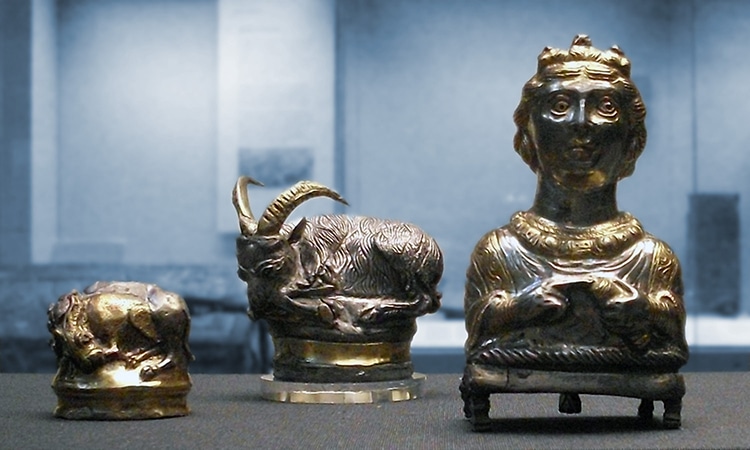
The remarkable Silver-gilt Roman pepper pots, part of the Hoxne Hoard, were unearthed in Suffolk, England in 1992 by a metal detector enthusiast. This discovery is considered one of the most significant in the UK, with the collection estimated to be worth millions of pounds. Inside an oak chest, a plethora of Roman coins and jewelry from the fifth century, marking the end of Roman rule in Britain, were carefully stored. The coins, in particular, are valuable for archeologists in determining precise historical timelines. It is believed that a wealthy family buried this treasure trove, as it contains luxurious items like gilded pepper pots, golden body adornments, and intricately crafted animal sculptures. Another noteworthy discovery, the St. Ninian’s Isle Treasure Trove, adds to the allure of ancient finds.
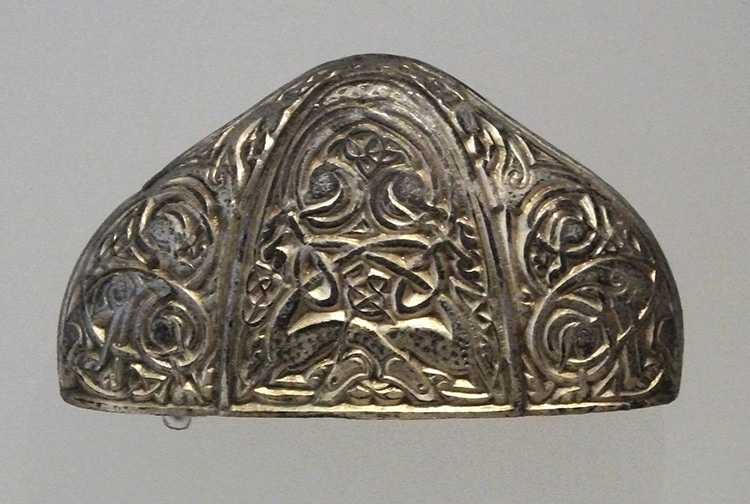
The St Ninian’s Isle Treasure, which consists of a sword hilt, is a hidden gem that was unearthed in Scotland in 1958. This treasure trove of early medieval silver includes beautiful jewelry pieces that are still reflected in Scottish designs today. One of the notable items found was the penannular brooch, also known as the Celtic brooch, which was used to fasten ancient clothing. The intricate sword pommel with raised Celtic designs was also part of the discovery. This find is similar to the Staffordshire Hoard, showcasing the rich history and culture of Scotland.
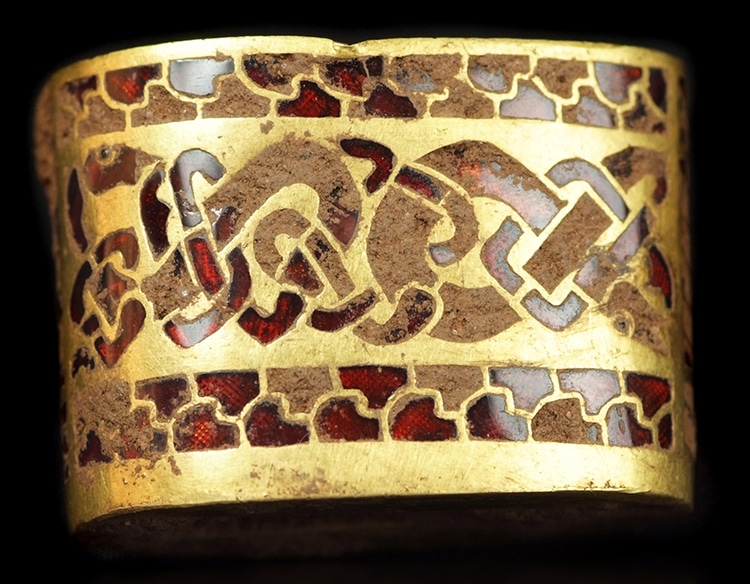
The incredible Staffordshire Hoard is a remarkable collection of Anglo-Saxon treasures found in the UK, including thousands of gold and silver items with intricate garnet inlay. Unearthed in 2009 in a plowed field, these valuable artifacts were carefully excavated by skilled archaeologists, offering historians a glimpse into life in 7th and 8th century Britain. The hoard, known for its exquisite craftsmanship, is believed to have been a special tribute, possibly left as an offering upon the passing of a brave warrior. Another notable discovery is the Mildenhall Treasure Trove.

Unearthed in 1942 in Suffolk, England, the Mildenhall Treasure is a treasure trove of Roman artifacts. The collection includes platters, dishes, floors, and spoons adorned with intricate mythical scenes. Initially, experts doubted the authenticity of the hoard’s origin, but subsequent discoveries have proven that such lavish items were indeed present in Roman territories. One standout piece from the treasure is the impressive Great Dish featuring Bacchus, the Roman god of wine. Interestingly, the individual who stumbled upon the treasure used the silverware for special occasions before eventually handing them over to authorities. Another notable find is the Ziwiye Hoard.
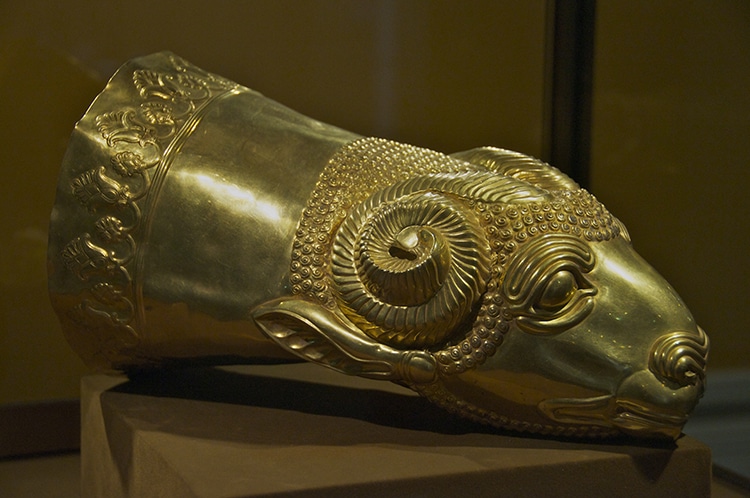
The Ziwiye Hoard, a collection of ancient treasures found in Iran in 1947, is a testament to the rich cultural diversity of the region dating back to the 9th century BCE. Despite the murky details of its discovery and the dispersion of many pieces into private collections, certain items like a gold rhyton in the shape of a ram’s head continue to captivate. Reflecting influences from Assyrian, Scythian, and other regional cultures, these treasures highlight the importance of ancient Iran as a trade hub along the Silk Road. One can only imagine the opulence and grandeur of using such a luxurious drinking cup, fit for a king.
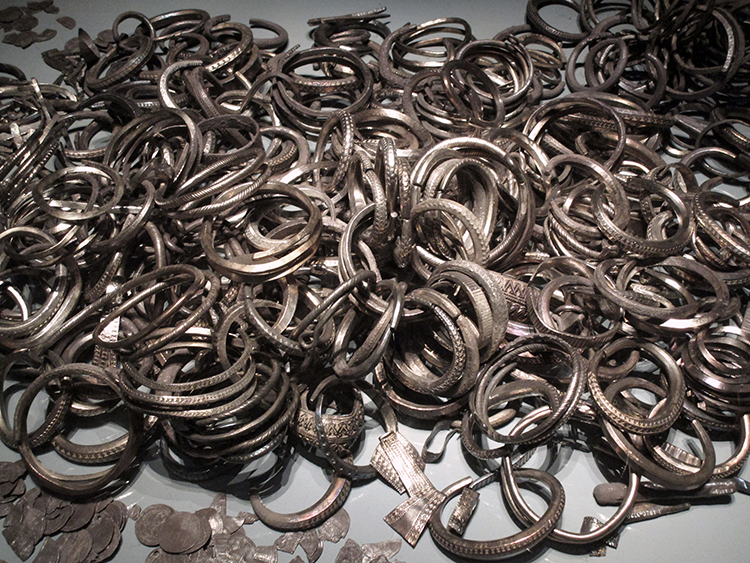
Have you heard about the Vikings burying their treasure? Back in 1999, a fascinating discovery was made in Sweden – the Spillings Hoard, a collection of Viking silver that included a multitude of ancient coins from the early medieval era. Interestingly, most of the coins were actually of Islamic descent, which sheds light on the extensive trade networks that existed during that time. It’s amazing to think that Vikings were collecting coins from regions as distant as North Africa and Central Asia! Another noteworthy treasure is the Treasure of Villena, which showcases the wealth and diversity of artifacts that were collected and buried by ancient civilizations.

During ancient times, people had a habit of concealing their precious items, like the gold bowls, bottles, and bracelets found buried alongside iron in Villena around 1000 BCE. These treasures, adorned with intricate patterns, showcase the remarkable gold-working abilities of our ancestors. Another stunning discovery is the Panagyurishte Treasure Trove.

Unearthed in Bulgaria back in 1949, the Panagyurishte Treasure is a collection of Thracian gold artifacts. The Thracians, an ancient Indo-European group residing in the Balkans and Anatolia, buried these golden treasures between 400 and 300 BCE. The Thracians have even been mentioned in the Illiad, adding to the intrigue surrounding this ancient civilization. (For further information on their history, check out…) Additionally, another interesting find is the Wonoboyo Hoard…
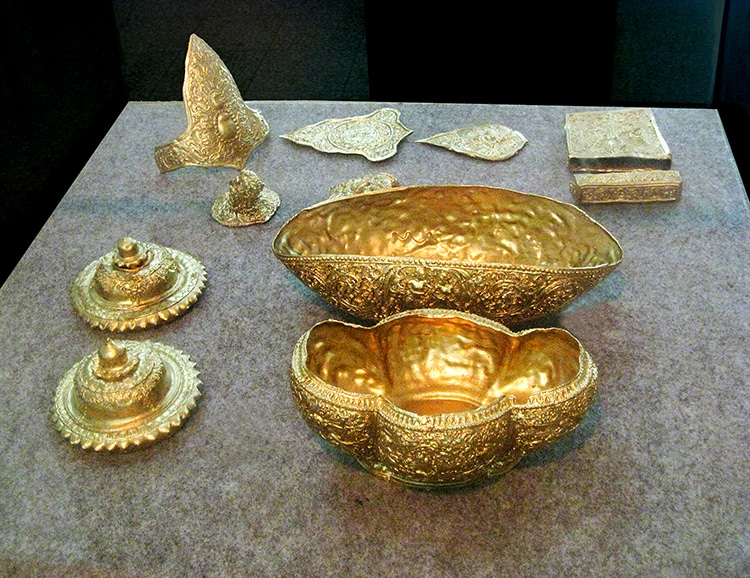
Imagine owning replicas of the stunning gold items from the Wonoboyo Hoard, unearthed in 1990 in Central Java, Indonesia. These treasures date back to the 9th century and are believed to be from the Medang Kingdom, showcasing intricate jewelry and delicate bowls of exceptional craftsmanship. Buried in earthen jars, these items are thought to have belonged to a royal family member. This ancient tradition of gold craftsmanship is truly remarkable, with some of the finest examples on display at the Metropolitan Museum of Art. Let yourself dream of discovering such fabulous treasures, just like you did as a child.
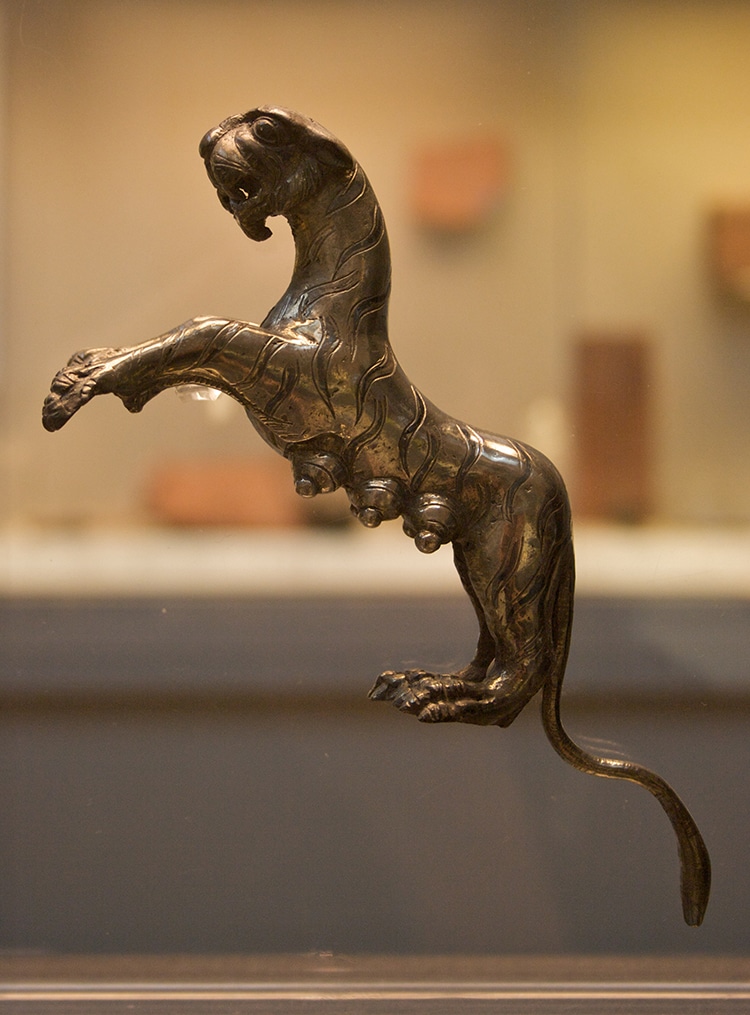
A handle designed in the shape of a tiger from the Hoxne Hoard collection. (Image credit: Mike Peel via Wikimedia Commons)